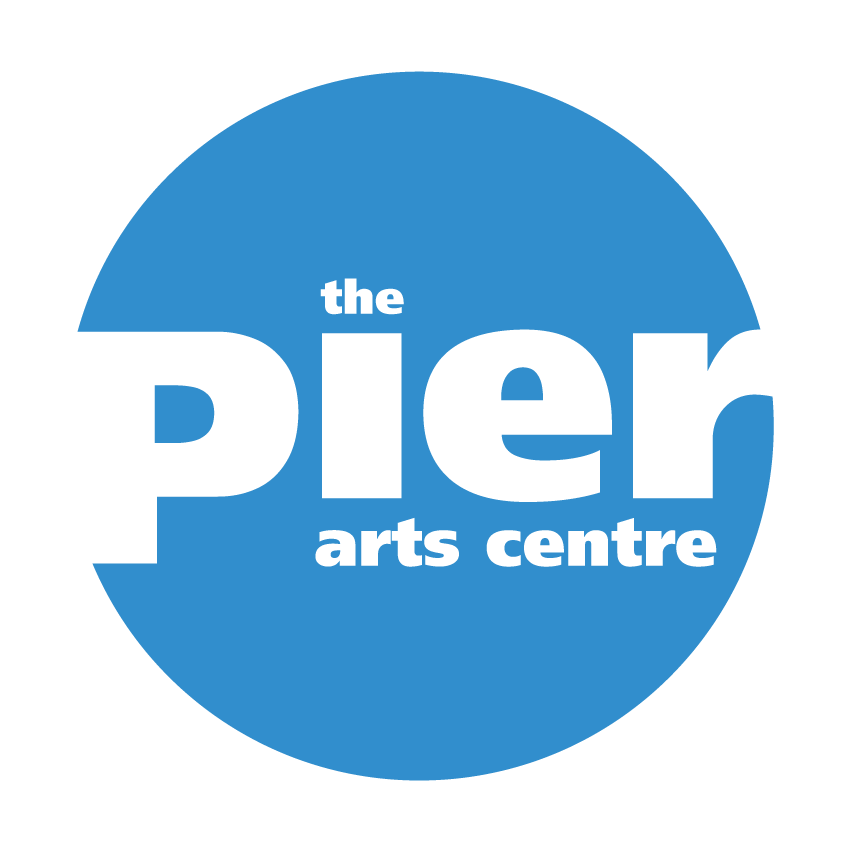Film still from ‘Tailpiece’ (1976)
This summer our Seasonal Assistant post has been held by Brandon Logan, who is currently entering his fifth year at Edinburgh College of Art, studying for an MA in Fine Art. Here Brandon muses on our summer exhibition, Margaret Tait, film/poems.
The procession of the Orquil Burn from source to sea; children playing around the house while music plays; a Kirkwall street made obscure by snow; gardens (her own in Firth) viewed in three ways: here is the stuff of life which becomes full and deserving subject once passed through the lens of the Orcadian poet/artist/filmmaker, Margaret Tait. In this, her centenary year, the Pier Arts Centre is presenting a celebratory exhibition of Tait’s work, film/poems, situating her work in film – for which she is perhaps best known – alongside, and in conversation with, her work in the written word.
Born in Kirkwall in 1918, Margaret Caroline Tait is now renowned as a leading avant-garde filmmaker, though she first studied medicine in the late 1930s at the University of Edinburgh, going on to serve in the Royal Army Medical Corps and work in various hospitals afterwards. It wasn’t until 1950 that Tait enrolled to study film at the Centro Sperimentale di Cinematografia in Rome, marking the beginning of a new career and with it the precious opportunity to focus her mind on film. There in Italy she co-founded her company, Ancona Films, before shortly moving office to Edinburgh’s Rose Street.
Tait travelled well in Europe and her service took her across South and Southeast Asia. It is interesting to note that even while based in Edinburgh and having tasted the world, many of her early films were made in Orkney - amongst them A Portrait of Ga (1952) and Happy Bees (1955) – both screening regularly during the Pier exhibition. It would appear that like many Orcadian artists, much of what inspired her she was ultimately able to find in her home islands. This may in part be due to the fact that Tait’s films so often move around themes of the everyday, and this in a sense is always at hand. Beyond a simple appreciation of the commonplace however - more penetrating perhaps - is a deep interrogation of the familiar in her work, and so perhaps Orkney did lend itself well to this end, as she made a permanent return home in the 1960s.
Place of Work (1976) best exemplifies this interrogating nature. In this film Tait presents to the viewer slow, often unmoving shots of Buttquoy House, her childhood home in Kirkwall, prior to moving and leaving it for good. The result is an intense half-hour long study which leaves us in the shadow of its maker as she attempts to exhaust this place, to unpick and un-weave the memory of it while the opportunity remains. The desire to take apart what we know so as to better understand it is reflected in much of her written work. As we move between the films in the Pier exhibition a few of her most questioning poems appear on walls. What is light? They ask us. What is it made of? What is elasticity? The answers which Tait finds are not always those which we would first expect. Steel, we now know, is the most elastic thing of all.
Tait apparently best liked showing friends the film fragments of whatever had captivated her recently on her living room wall, on a screen mounted within a frame so as to create a true picture in motion. It is in the Pier’s double-height gallery space which something of Tait’s sensibility has been most essentially captured. The room’s five-meter walls have been dressed in black cloth, making for a black-out which allows the usually airy space to feel both intimate and endless. A cycle of films play, not in a frame, but on a screen set just out from the wall. The effect is such that the film floating before the viewer takes on the life of an object, a thing in itself - it is a struggle to sit back, even more so not to reach out and grasp it.
Film still from ‘Aerial’ (1974)
First published in The Orcadian 16 August 2018



